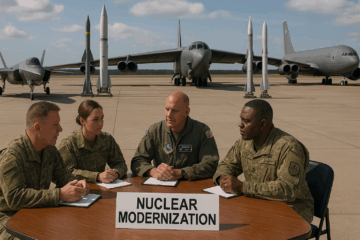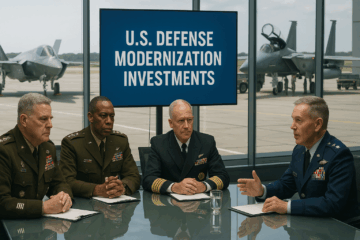As the world’s attention is increasingly focused on Iranian aggression in the Persian Gulf, it’s essential to look at the civil war in Yemen, a battlefield in the proxy fight between the U.S. and Iran.
The conflict in Yemen—one of the Arab world’s poorest states—has roots that extend back to the Arab Spring uprisings of the early 2010s—and beyond. The Houthi insurgency has been in existence since the early 2000s, but it wasn’t until 2012 when a wave of protests forced Yemeni President Ali Abdullah Saleh to step down after ruling the country for 22 years.
Saleh’s successor, Abdrabbuh Mansur Hadi was elected in a single-candidate election in 2012, much to the opposition of the Houthis, who boycotted voting. Hadi failed to successfully manage the country’s problems with food insecurity, unemployment, corruption, and militancy. Political instability only widened once a proposal to reorganize Yemen as a federal state divided into six regions was rejected, and security deteriorated significantly. Hadi was eventually forced from office in February 2015 as his relationship with the Houthis deteriorated severely.
Houthi militants began engaging with the Yemeni Army, and Hadi was placed under house arrest. However, he managed to flee the capital to his hometown of Aden, from where he made a public declaration that he retained executive power. However, he fled to Riyadh, Saudi Arabia as the Houthi’s expanded the territory under their control.
In the years since Hadi’s ouster, the situation in Yemen has significantly worsened. In addition to hosting a bloody civil war, Yemen has seen numerous acts of terrorism, carried out mostly by groups like Al Qaeda in the Arabian Peninsula (AQAP) and ISIS (Daesh). The United Nations has said it considers the humanitarian crisis in Yemen as the world’s worst. Millions of Yemeni civilians have been displaced, with millions more lacking access to clean water, food, and healthcare. Over one million cases of cholera have been reported in the country, resulting in thousands of deaths.
Foreign Intervention
Like the majority of Iranians, the Houthis are members of the Shia sect of Islam. In the broader Islamic world, Shia Muslims are a minority; the majority of Muslims belong to the Sunni sect. In involving itself in the Yemeni civil war, Iran likely saw an opportunity to advance its interests in a region where it has few friends while frustrating the efforts of Saudi Arabia, Tehran’s regional rival, to consolidate its influence on the Arabian Peninsula.
Part of Iran’s strategy in Yemen was providing Houthi forces with arms—crucially, drones, and ballistic missiles which are regularly employed against targets in Saudi Arabia. In the past several months alone, there have been numerous drone or missile strikes on critical infrastructure and energy facilities in Saudi Arabia. Furthermore, Tehran has mobilized its most important proxy group, Hezbollah.
In response to the Iranian regime’s support for the Houthi rebels, Saudi Arabia assembled a coalition of its regional allies to prosecute a military campaign aimed at restoring Hadi to power. The United States and the United Kingdom have assisted the coalition, providing intelligence, logistical support, and arms to the Saudi-led coalition to counter what they perceive as Iran’s growing influence and the Iranian regime’s efforts to further destabilize an already-troubled region. Complicating Riyadh’s efforts, however, the United Arab Emirates—the Saudi’s primary ally in the conflict—recently began withdrawing its forces from Yemen.
Iranian Proxy Groups
Providing material, financial, and advisory support to proxy forces in lieu of direct engagement enables Iran to engage in regional conflicts with a degree of deniability. Proxy forces are utilized to shape political developments in specific areas while minimizing potential costs for Iran and are arguably regarded within the regime as a beneficial tool for achieving its foreign policy objectives.
The Islamic Republic provides Houthi forces with weaponry, supplies, training, and logistics, a strategy that aligns with Tehran’s playbook for shaping political and security conditions in a favorable manner. Hezbollah, based in Lebanon and perhaps the best-known Iranian proxy, has, over time, acquired substantial political powers, influence, and capabilities—both in Lebanon and beyond.
In Yemen, Hezbollah has advised and delivered Iranian weapons to the Houthis. In Syria, the group has provided support to Bashar al Assad’s government forces. Among other groups that have served as Iranian proxies in Syria are Liwa Abu Fadl al-Abbas (LAFA) and the Iraqi Asa’ib Ahl al-Haq (AAH), established in 2006.
U.S.-Iran Tensions and Escalation
Tensions between Tehran and Washington have continued to escalate for the past few months. However, direct military confrontation between Iran and the U.S. remains an unlikely option given U.S. President Donald Trump’s continued restraint despite escalatory provocations by the Iranian regime. However, the Trump administration will continue to provide logistical support, intelligence, and weapons shipments to Riyadh—despite bipartisan opposition in the U.S. Congress.
Both sides are already deeply involved in the Yemeni civil war, and their respective interests are seemingly intractable. That being said, the leader of both parties understand the devastating costs a full-blown war would have. As a result, the conflict in Yemen will persist for the foreseeable future, fueled by a regional quasi-hybrid proxy war between the U.S.and the Islamic Republic that shows no sign of deescalating.
About the Author
Alan Lis
Alan Lis is a graduate student of international security at the University of Warwick.



